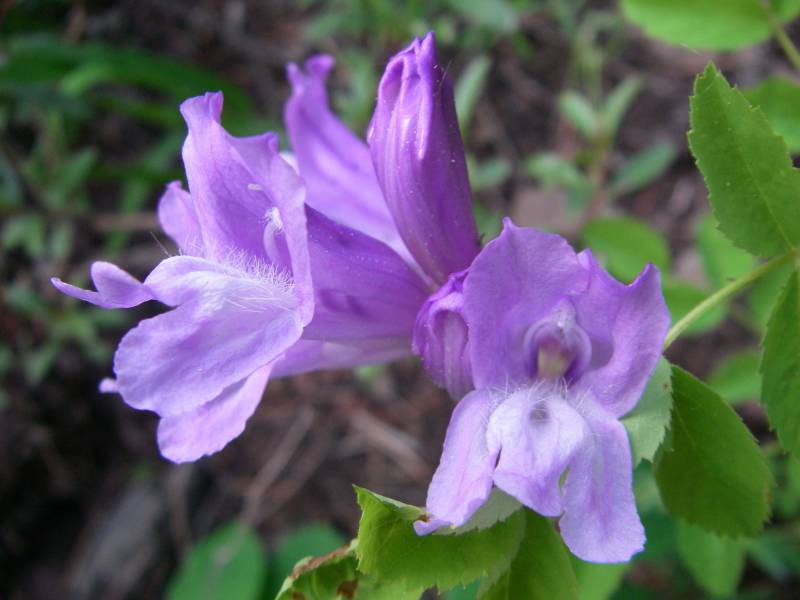Penstemon ellipticus
Penstemon fruticosus
rockvine beardtongue
bush penstemon, shrubby penstemon
Leaves opposite, glabrous, those of the mat short-petiolate, the blade broadly elliptic, 1-2.5 cm. long and 5-15 mm. wide;
leaves of the flowering shoots sessile, more ovate, nearly as large.
Leaves opposite, the larger leaves crowded toward the base of the season\\\\'s growth on short, sterile shoots, the blades entire or toothed, up to 6 cm. long and 1.5 cm. wide, short-petiolate; flowering shoots with reduced and less-crowded leaves.
Inflorescence a compact, few-flowered raceme, with simple, axillary pedicels, glandular-hairy;
calyx 8-15 mm. long, the 5 segments lance-linear;
corolla deep lavender, 27-40 mm. long, 1 cm. wide at the mouth, keeled on the back, glabrous outside, with long, white hairs at the base of the lower lip within;
anthers long-woolly, the pollen sacs wholly dehiscent and opening wide enough to form a plane;
staminode slender, shorter than the fertile filaments, long-bearded much of its length.
Inflorescence a short, few-flowered, bracteate raceme, with simple, axillary pedicels;
calyx 7-15 mm. long, with 5 lanceolate, long-acuminate segments;
corolla blue-lavender to light purplish, 30-50 mm. long, 1 cm. wide at the mouth, keeled on the back, glabrous outside, with long, white hairs on the base of the lower lip within;
anthers long-woolly, the pollen sacs wholly dehiscent and opening wide enough to form a plane;
staminode slender, shorter than the 4 fertile filaments, long-bearded toward the tip.
Capsule 8-11 mm. long.
Capsules 8-12 mm. long.



